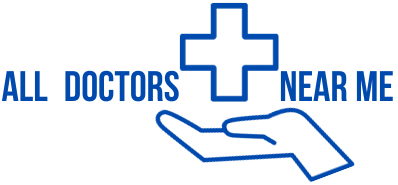When it comes to health insurance in California, residents have two main options: Medi-Cal and Covered California. Both are part of the state’s health care system, but they serve different populations and have different eligibility criteria, insurance options, and costs. It’s important to understand the differences between Medi-Cal and Covered California so you can determine which plan best suits your needs.
What is Medi-Cal?
Medi-Cal is California’s Medicaid program, which provides health insurance to low-income individuals and families. It’s a joint federal and state program that offers a wide range of health care services, such as doctor visits, hospitalizations, prescription drugs, and emergency care. Your eligibility for Medi-Cal depends primarily on your income, family size, and factors such as age, pregnancy, and disability. Medi-Cal typically provides services to people who meet certain low-income thresholds, such as seniors, people with disabilities, and pregnant women. Medi-Cal typically requires little to no monthly premiums and little or no out-of-pocket costs.
What is Covered California?
Covered California is California’s health insurance marketplace, created under the Affordable Care Act (ACA). Unlike Medi-Cal, Covered California is designed for individuals and families who do not qualify for Medi-Cal but still need help obtaining health insurance. Covered California provides a marketplace where people can purchase private health insurance plans offered by private insurance companies. Plans come in different tiers: bronze, silver, gold, and platinum. Each tier offers different levels of coverage and premiums. Provides financial assistance in the form of subsidies or tax credits, based on income, to help lower the cost of health insurance for eligible individuals and families.
Eligibility Differences
The main difference between Medi-Cal and Covered California is the eligibility criteria. Medi-Cal is designed for individuals and families with very low incomes who meet other specific requirements. This group includes seniors, people with disabilities, pregnant women, and children from low-income families. Medi-Cal eligibility is based on income. Coverage is available to anyone who meets the eligibility requirements.
Covered California, on the other hand, is designed for individuals and families whose income is too high to qualify for Medi-Cal but who still need help paying for private health insurance. Covered California has higher income limits than Medi-Cal. People who qualify for Covered California can receive subsidies based on their income, making health insurance more affordable.
Insurance and Benefits
Medi-Cal and Covered California both offer comprehensive coverage, but they are structured differently. Medi-Cal typically covers a wide range of health care services, such as doctor visits, hospital stays, prescription medications, mental health services, and more. Medi-Cal participants may be required to opt into a managed care plan, where care is provided through a network of providers. Insurance coverage is generally broad, but Medi-Cal is designed to ensure that low-income individuals and families have access to affordable health care.
Covered California offers health insurance through private insurance companies. Coverage options vary depending on the plan level you choose. Covered California offers plans in bronze, silver, gold, and platinum categories, with each category offering a different level of coverage. For example, bronze plans have the lowest premiums but higher co-pays, while platinum plans have higher premiums and lower co-pays. Covered California offers basic health care, such as maternity care, emergency care, mental health care, and preventive care. However, the specific details of coverage vary depending on the plan you choose.
Cost Difference
One of the main differences between Medi-Cal and Covered California is the cost of health insurance. Medi-Cal is designed to be affordable for low-income individuals. Often, coverage is virtually free. Most people enrolled in Medi-Cal do not pay premiums and may have little or no co-pays for medical care.
Covered California, on the other hand, has monthly premiums that vary depending on the insurance plan you choose. While premiums for Covered California plans vary, the difference between Medi-Cal and Covered California. Medi-Cal offers year-round enrollment. This means that if you qualify for the program, you can apply for coverage at any time of the year. Once your application is approved, your Medi-Cal coverage begins immediately. This makes it easier for people to get medical care when they need it.
Covered California, on the other hand, has an open enrollment system. Open enrollment usually occurs once a year. People who want to enroll or change plans must apply during this time. If you miss the open enrollment period, you may not be able to enroll in Covered California unless you qualify for a special enrollment period. Certain life events can trigger a special enrollment, such as getting married, losing another insurance plan, or moving to California.
Conclusion
Medi-Cal and Covered California are both designed to provide affordable health care, but they are designed for different populations. Medi-Cal focuses on low-income individuals and families and offers free or low-cost health insurance. Covered California is designed for people whose income is too high to qualify for Medi-Cal but who still need help paying for private health insurance. The main differences between the two programs are eligibility requirements, costs, coverage options, and enrollment periods. Understanding these differences can help you determine which plan best fits your healthcare needs and financial situation.
